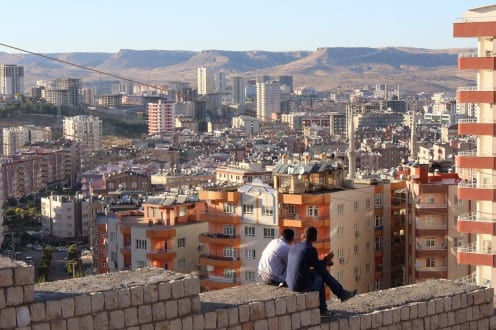The World Cup on social media worldwide
By ucsanha, on 27 June 2014
In these weeks, many of the world’s eyes are trained on the new football stadiums in towns around Brazil as one of the great global sports spectacles unfolds in its most recent manifestation. Of course not all are watching just to cheer on their national team or see who wins. Many are curious (and critical) about the ways the global football federation, FIFA, has commodified the event. Some are hoping for a glimpse of why so many people discuss the art of Messi and Ronaldo rather than being bothered with the details of the offside rule. Still others are attentive to news about human rights abuses that have targeted poor urban neighbourhoods, sex workers, and workers in informal economies, especially given local protests aimed at government spending on the event. Some have a new appreciation of Brazilian music as a result of programmes dedicated to the event. But these groups are not mutually exclusive. Many people who love football are also interested in this wider context, both cheering their ream and reading biting critiques (or indeed, critiques about biting). What is new is the degree to which we can directly listen into these conversations on social media
Many of us are inspired by the ideal that football is becoming a truly global game, spanning continents, class, race, religion and, outside the world cup, even gender. Sadly the evidence found by the Global Social Media Impact study does not support such a lofty transformation. We also find little to suggest that football is an aspect of a growing homogenization of the world. These reports make clear that cultural differences are reflected even in the ways people experience the World Cup. For example, in south-eastern Italy, watching football is a private family event held in the home, while in Trinidad, known for Carnival and spectacle, World Cup viewing is indeed a social event. In Chile, no matter how you watch the match, showing your national pride by wearing a red shirt and yelling local slang is practically a law while the English are relatively sedate.
Our primary focus, however, is on the coverage within social media. This shows that given the time difference with Brazil, World Cup viewing in China is often solitary, with friends only able to chat through social media messaging. Indian fathers use the World Cup as a chance to bond with children over YouTube videos of players’ techniques. And working class Brazilians use social media to celebrate their upward mobility as individuals and a nation, and great pride that the event is happening in their own nation, even if they could never dream of being able to attend a game.
In most cases there is little to suggest that people transcend local interest to celebrate this as a global event. Rather we see how sport becomes an expression for intense nationalism. In Turkey lack of local representation results in apathy. On the other hand while Chinese migrant factory workers may not engage, some men in the more settled village population of China do seem to use football to connect with the wider world, and in several of our sites football does provide an opportunity for local social bonding and enjoyment. This may not correspond to what has now often referred to as the “beautiful game,” although in compensation most sporting enthusiasts have found the level of football itself is much more open and exciting than in the previous World Cup. And indeed our reports positively suggest that watching how people discuss the World Cup on social media is actually a rather good way of understanding how the world around us is changing if always in terms of these constellations of local concerns.
THE WORLD CUP ON SOCIAL MEDIA WORLDWIDE
This article is part of a special series of blog posts profiling how social media is affecting how ordinary people from communities across the planet experience the 2014 World Cup.
- Brazil: “Why aren’t they protesting?”: low-income Brazilian’s views on the World Cup
- Chile: Seeing red: watching the World Cup in Northern Chile
- China (North): Online and under the covers: the World Cup and social media in rural China
- China (South): “Watch the World Cup – watch the fun and the world”
- India: Football World Cup 2014: Observations from Panchagrami
- Italy: ‘We are more united for the World Cup than for Christmas!’: the World Cup in Italy
- Trinidad: “It ain’t ova till its ova” – Spectacular sports and social media: the World Cup in El Mirador
- Turkey: “Turks have no other friends besides the Turks” – a Turkish saying
- United Kingdom: Englishness, the World Cup and the Glades
 Close
Close














